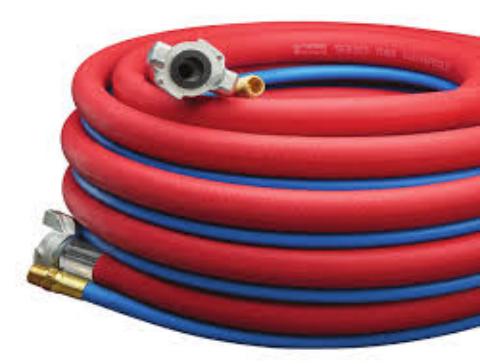You may be curious about the material and manufacturing process of the special hose that cools furnace door openings. In this article, we'll discuss the production process and the characteristics of this type of hose. This will help you decide if this type of hose is right to fit your application.
what material is used for the special hose for furnace door cooling
Non-conductive furnace door cooling hose is a special type hose that is specifically designed for furnace doors. It has been tested to withstand harsh environments and high temperatures in furnaces. The hoses are flame- and heat-resistant and have a fiberglass cover to provide excellent protection.
The special hoses are manufactured from chloroprene rubber or high-quality black smooth synthetic rubber. Their high resistance to fire, abrasion, oils, and ozone offers them long service life. These hoses are also resistant to corrosion and have a high level of safety.
The hose is designed to supply cooling water to a furnace door, mast arm, vault wall, or furnace panel. They come in a variety sizes, from one inch to five. For harsh melt shop environments, they are often covered with a 2-ply fiberglass covering. The hoses can be made with multiple ply fabric canvass, or cord for suction and discharge applications. Additionally, the hoses can have a dual plastic helix for additional flexibility.
PVC or CPVC are used for the vent pipes and condensate. In contrast, ABS is made of acryliconitrile-butadiene-styrene. Both plastics have different maximum heat service temperatures. For instance, PVC has a service temperature of 140 degrees Fahrenheit, while CPVC and ABS have higher heat service temperatures. Therefore, you should consult your furnace manufacturer for the best choice of piping.
the production process of the special hose for furnace door cooling
Special hoses for furnace doors are available in a variety of sizes, nominal outer diameters, and temperature ratings. These hoses are made from SBR synthetic rubber and include a fiberglass fabric ply over the rubber cover. Four spiral-plies are added to reinforce the hoses with synthetic fabric reinforcement. They are used for conveying cooling water to furnace doors in steel mills.
There are many ways to make the special hose for furnace door cool. Its construction allows it to withstand high temperatures while providing great flexibility. These hoses are suitable for use in steel mills, glass plants, foundries, and other industries. They can withstand steel splashes and external heat radiation as well as electrical shock. It is lightweight and easy to use.
The suggested model allows users to select the heat treatment technique, the desired temperature, and the time to hold the temperature. This model also allows users to monitor the heat treatment process while ensuring safety. The continuous control algorithm, composed of intelligent fuzzy logic and PI algorithm, enables users to select the temperature and time of desired temperature holding.
A steel furnace is a challenging environment. The roof of the furnace may swing out of the way and move the hydraulic lines. The hydraulic lines can also be lifted free by the action on the furnace. Depending on the conditions, the lifespan of a steel furnace can range from 10 months to three years.
The characteristics of the special hose used for furnace door cooling
The Non-Conductive Furnace Door Hose is an industrial cooling hose specially designed for furnace applications in which high temperatures are present. It is made up of a reinforced braid of high tensile carbon steel wire wire and a heat-resistant fabric layer that protects it against sparks and external heat radiation. In addition to its excellent resistance to extreme temperatures, it is also very light and flexible.
For superior heat and chemical resistance, the special hose is covered with an aramid cover that is heat-resistant and non-conductive. This material is also non-conductive and has a minimum resistance at 1000 volts DC of 1 megaohm per in.

